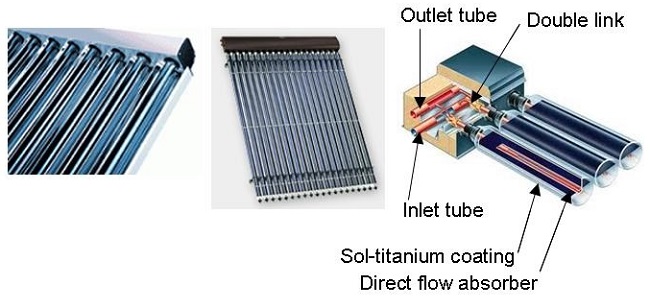Solar collectors must:
- Provide best possible heat recovery
- Be the least cumbersome as possible
- Not be too heavy
- Be resistant and easy to maintain
- Be of a reasonable price
We can identify:
Flat plate solar collectors:

Source solarpraxis
Flat plate collectors are composed of:
- An aluminium casing or frame with sealing strips
- A transparent cover in tempered glass on the front surface
- Thermal insulation on the rear surface
- An absorber plate or copper absorber covered with selective coating
- Welded copper tubes on the absorber where the heat transfer fluid circulates
We can identify:
Vacuum tube collectors:
Vacuum collectors are composed of two concentric copper tubes welded to a flat
fin or “absorber”. The assembly is sealed in a partially or totally evacuated
glass tube. The heat transfer fluid circulates inside the copper tubes.
The tubes are connected to the collector on the work site.
These collectors present less thermal loss per [m²] than the flat plate
collectors, but are currently much more expensive.

There are different types of vacuum or air-evacuated tubes:
- Tubes without fins but with the end of the glass tubes coated in pure silver.
- Heat pipe collectors: a refrigerant circulates in these collectors with its evaporation/condensation contributing to heat recovery.
Positioning the collectors:
We can identify:
- Collector panels placed on top of the roof (renovation)
- Collector panels fitted within the roof (new installations)
- Collector panels fitted to frames (on flat roof terraces)

